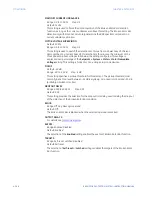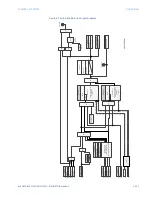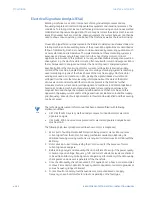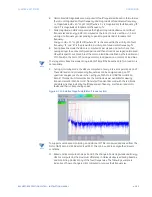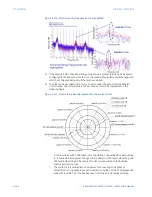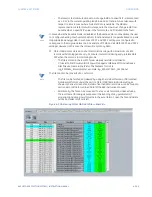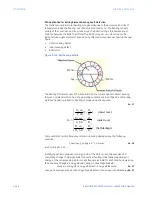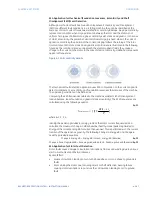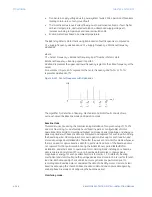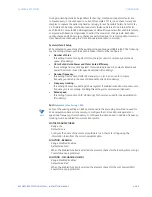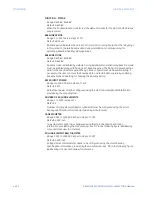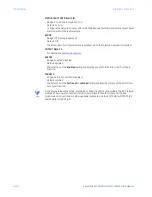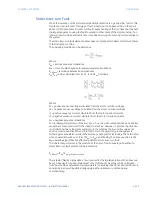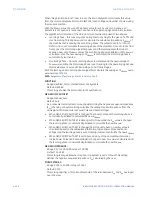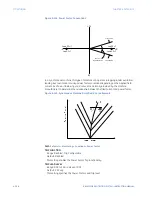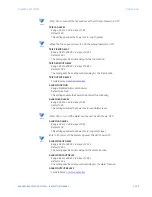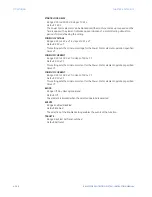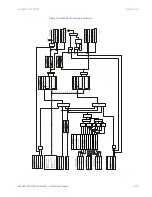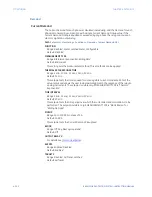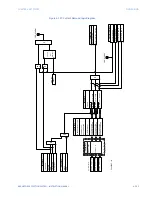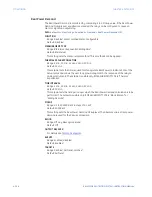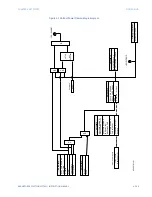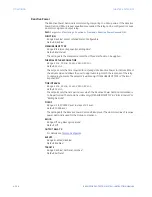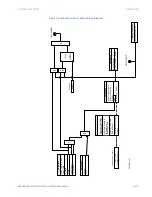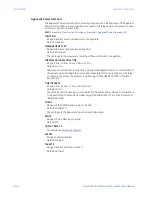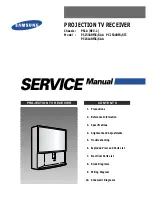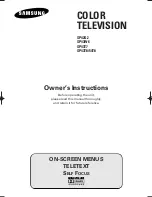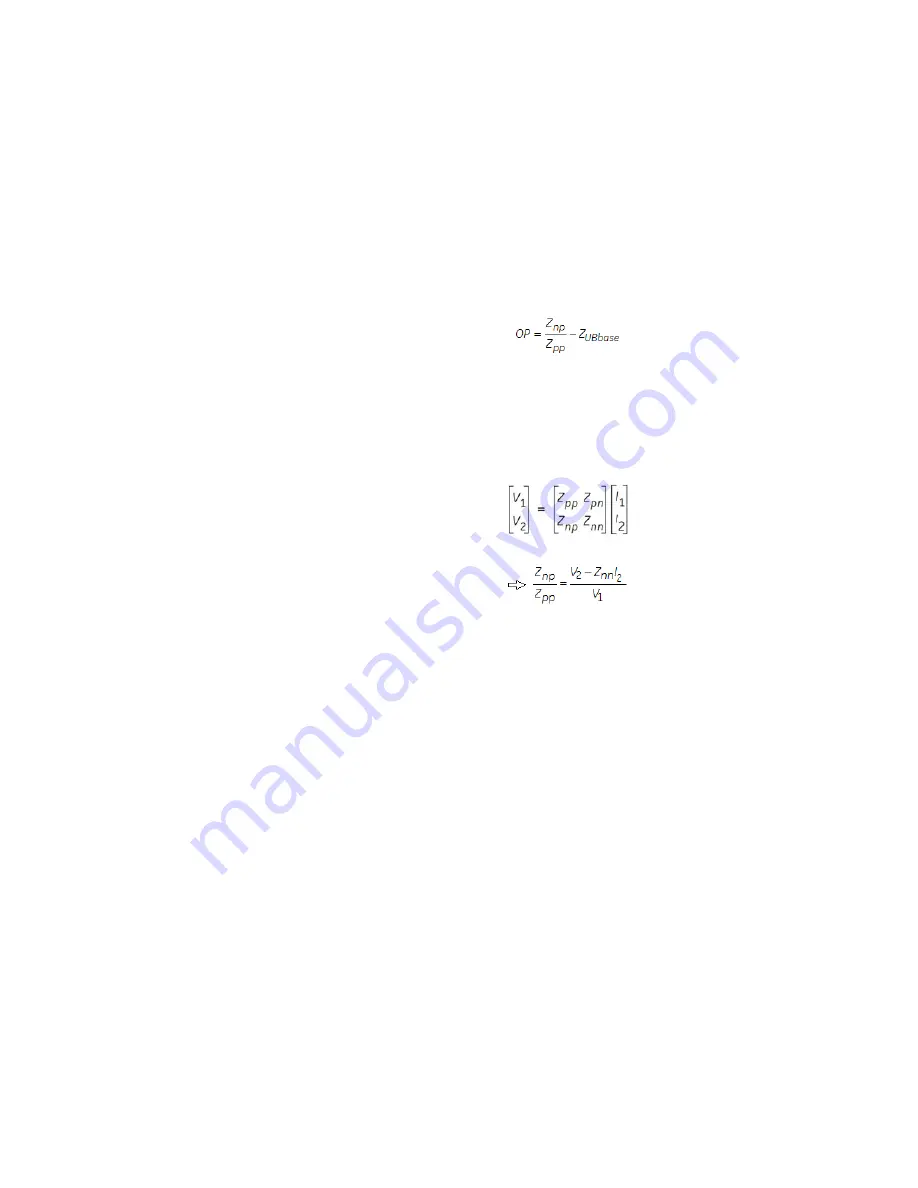
CHAPTER 4: SETPOINTS
MONITORING
869 MOTOR PROTECTION SYSTEM – INSTRUCTION MANUAL
4–293
Stator Inter-turn Fault
When the insulation of the stator windings deteriorates due to age and other factors, this
creates an inter-turn fault. This type of fault is local and can happen either on the same
phase or different phases. An inter-turn fault causes heating at the local level, but the heat
rapidly propagates, causing the fault to extend to other areas of the stator winding. If an
inter-turn fault can be detected in time, it provides warning of upcoming major damage to
the system.
The stator inter-turn fault element uses sequence components to detect stator turn failure
of the induction machine.
The operating condition can be defined as:
Where:
Z
pp
= positive sequence impedance
Z
np
= cross-coupled negative-to-positive sequence impedance
Z
UBbase
= learned unbalance base impedance
Z
np
/Z
pp
can be calculated from V1, V2, I2 and Z
nn
as follows:
Where:
V1 = positive sequence voltage calculated from the motor terminal voltages
V2 = negative sequence voltage calculated from the motor terminal voltages
I1 = positive sequence current calculated from the motor terminal currents
I2 = negative sequence current calculated from the motor terminal currents
Z
nn
= negative sequence impedance
For an ideal symmetrical machine Z
pn
= Z
np
= 0 i.e., it is a decoupled positive and negative
sequence component circuit for the induction machine. However, in practice the situation
is not ideal and due to inherent asymmetry in the machine the Z
pn
and Z
np
values are
small non-zero quantities. When a turn fault occurs, the asymmetry in the system is
further aggravated which results in these cross-coupling terms increasing. The normalized
cross-coupled impedance, or ratio of Z
np
to Z
pp
as defined by the above equation, is the
key operating signal that can effectively detect a stator inter-turn fault.
The inherent asymmetries in the machine at the time of commissioning and without a
stator inter-turn fault present are represented as:
Z
UBbase
= (Z
np
/ Z
pp
)
at 0 inter-turn fault
The setpoint “Neg Seq Impedance” (Z
nn
) required for the implementation of the above can
be set manually if “Neg Seq Imp Autoset” is set toManual. This value can be calculated
from the machine equivalent circuit parameters (i.e. winding inductance and resistance). It
can also be measured by deliberately applying the unbalance condition during
commissioning.
Summary of Contents for 869
Page 10: ...VIII 869 MOTOR PROTECTION SYSTEM INSTRUCTION MANUAL ...
Page 127: ...CHAPTER 3 INTERFACES SOFTWARE INTERFACE 869 MOTOR PROTECTION SYSTEM INSTRUCTION MANUAL 3 49 ...
Page 129: ...CHAPTER 3 INTERFACES SOFTWARE INTERFACE 869 MOTOR PROTECTION SYSTEM INSTRUCTION MANUAL 3 51 ...
Page 538: ...4 406 869 MOTOR PROTECTION SYSTEM INSTRUCTION MANUAL TESTING CHAPTER 4 SETPOINTS ...
Page 578: ...6 22 869 MOTOR PROTECTION SYSTEM INSTRUCTION MANUAL FLEXELEMENTS CHAPTER 6 METERING ...
Page 592: ...7 14 869 MOTOR PROTECTION SYSTEM INSTRUCTION MANUAL CLEAR RECORDS CHAPTER 7 RECORDS ...


